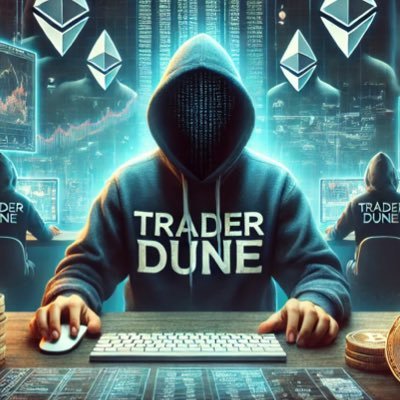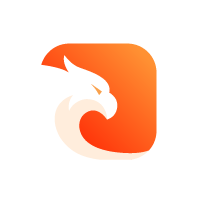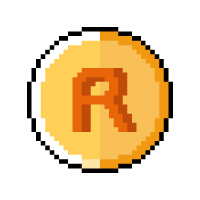

Decentraland PriceMANA
MANA/USD price calculator
Live Decentraland Price Today in USD
Do you think the price of Decentraland will rise or fall today?
About Decentraland (MANA)
What Is Decentraland?
Decentraland is a virtual reality platform that empowers users to own, create, and trade virtual assets and digital real estate. Launched in 2017, Decentraland is constructed on the Ethereum blockchain, offering an open, decentralized metaverse where users can interact, socialize, and construct immersive experiences without the need for intermediaries or traditional platforms. In Decentraland, users can design digital environments, host events, and even establish virtual businesses, bridging the gap between the virtual and physical worlds.
In the Decentraland ecosystem, users can purchase parcels of virtual land known as "LAND" and develop them into various creations using the platform's built-in editor. This land is represented as non-fungible tokens (NFTs) on the Ethereum blockchain, providing users with true ownership of their virtual assets. As NFTs, each LAND is unique, scarce, and interoperable with other virtual worlds and platforms, further enhancing its applications.
Resources
Official Whitepaper: https://decentraland.org/whitepaper.pdf
Official Website: https://decentraland.org
How Does Decentraland Work?
Decentraland operates as a decentralized network of nodes, each running the Decentraland software. These nodes communicate and interact to maintain a shared virtual environment. Users can access Decentraland through web browsers or virtual reality headsets, entering an expansive and immersive world where they can explore, socialize, and create. Users can purchase and interact with NFT-based digital real estate, known as LAND. When users modify their LAND or other virtual assets, these changes are recorded on the Ethereum blockchain, providing a permanent and verifiable record of ownership and transactions.
Decentraland's virtual environment is organized into various districts, each with a specific theme and focus. These districts encompass commercial spaces, gaming zones, art galleries, and more. Users can customize their LAND within these districts and craft unique experiences for themselves and visitors. The possibilities are limitless – from hosting live events and building interactive games to setting up virtual storefronts for digital goods. The platform also supports third-party applications and tools, further extending the potential for creativity and innovation in the virtual world.
What Is MANA Token?
MANA is the native cryptocurrency of the Decentraland ecosystem. Users can earn, trade, or purchase MANA for various transactions, such as acquiring LAND, accessing premium content, or participating in events. Users can also stake their MANA tokens to participate in the Decentraland DAO (Decentralized Autonomous Organization), enabling them to vote on proposals and influence the platform's future.
Decentraland's Impact on Finance
Decentraland is revolutionizing the financial landscape with its decentralized, virtual economy. The introduction of digital currencies, blockchain technology, and virtual worlds like Decentraland has disrupted traditional financial systems. As users engage in transactions within the platform using MANA tokens, the boundaries between virtual and real-world economies start to fade.
What Determines Decentraland's Price
In the ever-evolving cryptocurrency landscape, tracking the Decentraland price is a task embraced by keen investors worldwide. Currently, the Decentraland market cap, noted to be approximately $526 million as of September 2023, stands as a witness to its escalating prominence in the metaverse sector.
Today, the MANA price today is significantly influenced by its deep-rooted connection with a virtual reality platform that allows users to create, explore, and monetize content and applications. An inspection of the Decentraland price history unveils a path defined by crucial events within the metaverse, notably high-profile virtual land auctions and collaborations with prominent brands like Samsung and Atari.
The MANA cryptocurrency price maintains a close relationship with its utility in the Decentraland ecosystem. As the core token, MANA orchestrates transactions including LAND acquisitions and other assets, besides establishing a fundamental role in steering the Decentraland platform through a decentralized autonomous organization (DAO). This DAO enables MANA coin holders to participate in a variety of proposals, from policy amendments to project subsidies, fostering a community-centric developmental approach. Furthermore, the MANA coin value is bolstered by its integration with the Ethereum blockchain, providing a fortified and decentralized ledger for overseeing ownership and transactions within the metaverse.
Attempting a precise Decentraland (MANA) price prediction is rendered complex due to its innate volatility, a trait common amongst cryptocurrencies. Despite witnessing considerable fluctuations — peaking remarkably in November 2021 with a market cap nearing $9.5 billion, and subsequently experiencing a considerable descent — the MANA to USD potential continues to pique investor interest, particularly within the flourishing metaverse sphere. Essentially, the Decentraland live price mirrors its adoption rate, with an increasing user base potentially fueling a surge in the demand for MANA tokens.
For those looking to venture into this digital frontier, keeping an eye on the Decentraland (MANA) latest news and conducting thorough research is essential. The Decentraland price analysis should encompass a deep understanding of the metaverse's growth prospects and the broader trends in the cryptocurrency market. If you are considering investing, you might opt to buy Decentraland (MANA) on reputable cryptocurrency exchanges such as Bitget. Remember, while the Decentraland (MANA) future price holds potential, it comes with inherent risks, and it's crucial to approach with caution and due diligence.
AI analysis report on Decentraland
Decentraland Price History (USD)
 Lowest price
Lowest price Highest price
Highest price 
What is the highest price of Decentraland?
What is the lowest price of Decentraland?
Decentraland Price Prediction
When is a good time to buy MANA? Should I buy or sell MANA now?
What will the price of MANA be in 2026?
What will the price of MANA be in 2031?
Hot promotions
FAQ
What factors influence the price of Decentraland (MANA)?
How can I buy Decentraland (MANA) on an exchange?
What is the future price prediction for Decentraland (MANA)?
Why is the price of Decentraland (MANA) so volatile?
How does the Decentraland (MANA) burn mechanism affect its price?
Where can I view the current price of Decentraland (MANA)?
What are some upcoming events that might impact the price of Decentraland (MANA)?
How does Decentraland (MANA) compare to other virtual world cryptocurrencies in terms of price?
Has Decentraland (MANA) ever experienced a price surge? If so, when?
Can I use Decentraland (MANA) for in-game purchases, and does this affect its price?
Decentraland (MANA) có phải là khoản đầu tư tốt không?
Yếu tố ảnh hưởng giá của MANA
Token MANA được sử dụng vào mục đích gì?
Làm cách nào để kiếm MANA ở Decentraland?
Làm cách nào để mua LAND ở Decentraland?
Tôi có thể kiếm MANA miễn phí ở Decentraland không?
What is the current price of Decentraland?
What is the 24 hour trading volume of Decentraland?
What is the all-time high of Decentraland?
Can I buy Decentraland on Bitget?
Can I get a steady income from investing in Decentraland?
Where can I buy Decentraland with the lowest fee?
Decentraland News
Decentraland Updates
Cros (CROS): Pioneering Decentralized In-Game Advertising in a Multi-Trillion Dollar Gaming Economy
Bitget Learning Module 2, Episode 4: An Introduction to the Metaverse
How to Navigate the Emergence of Web3
Real-World Use Cases for Blockchain and Crypto: Orchestrating a Digital Symphony in Entertainment
How Non-Fungible Tokens (NFTs) Are Transforming the Art World
Top 10 Most Googled Questions About Cryptocurrency in 2023
Bitget Hot Takes (January 30 - February 05)
Bitget Hot Takes (January 23 - January 29)
NFTs Trends In 2022 and Beyond
Bitget Hot Takes (July 18 - July 24)
Decentraland Market
Decentraland Holdings
Decentraland holdings distribution matrix
Decentraland holdings by concentration
Decentraland addresses by time held

Global Decentraland Prices
- 1
- 2
- 3
- 4
- 5
Related cryptocurrency prices
Prices of newly listed coins on Bitget
How to buy Decentraland(MANA)

Create Your Free Bitget Account

Verify Your Account

Convert MANA to USD
Buy more
Where can I buy Decentraland (MANA)?
Video section — quick verification, quick trading

MANA/USD price calculator
Decentraland ratings
Bitget Insights





Trade
Earn
MANA/USDT
SpotMANA/USDT
MarginMANA/USDT
USDT-M Futures








Decentraland Social Data
In the last 24 hours, the social media sentiment score for Decentraland was 3.3, and the social media sentiment towards Decentraland price trend was Bullish. The overall Decentraland social media score was 229,751, which ranks 102 among all cryptocurrencies.
According to LunarCrush, in the last 24 hours, cryptocurrencies were mentioned on social media a total of 1,058,120 times, with Decentraland being mentioned with a frequency ratio of 0.03%, ranking 155 among all cryptocurrencies.
In the last 24 hours, there were a total of 827 unique users discussing Decentraland, with a total of Decentraland mentions of 374. However, compared to the previous 24-hour period, the number of unique users decrease by 4%, and the total number of mentions has increase by 27%.
On Twitter, there were a total of 3 tweets mentioning Decentraland in the last 24 hours. Among them, 33% are bullish on Decentraland, 0% are bearish on Decentraland, and 67% are neutral on Decentraland.
On Reddit, there were 48 posts mentioning Decentraland in the last 24 hours. Compared to the previous 24-hour period, the number of mentions decrease by 38% .
All social overview
3.3